Aesculus pavia
(Red Buckeye)
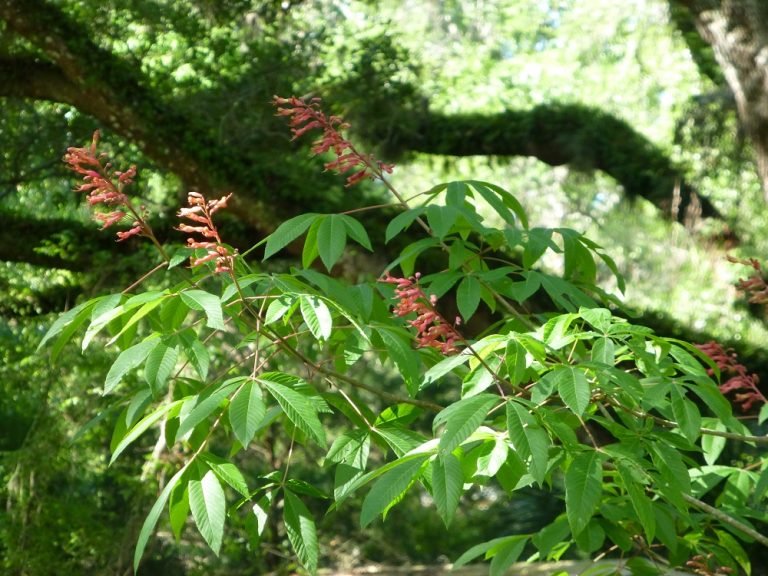
Common Names, Latin Name, and Family
Some of its common names are red buckeye, scarlet buckeye, and firecracker plant.
Its Latin name is Aesculus pavia.
It is found in the Sapindaceae, soapberry, family.
Form
Red buckeye is a native, deciduous, tree that can grow to a mature height of 30 feet.
Leaves
The leaves are palmately compound with five, to occasionally seven, leaflets.
The leaves are opposite on the branches with long petioles and measure 18 – 30 cm in length.
The leaf margins are finely toothed.
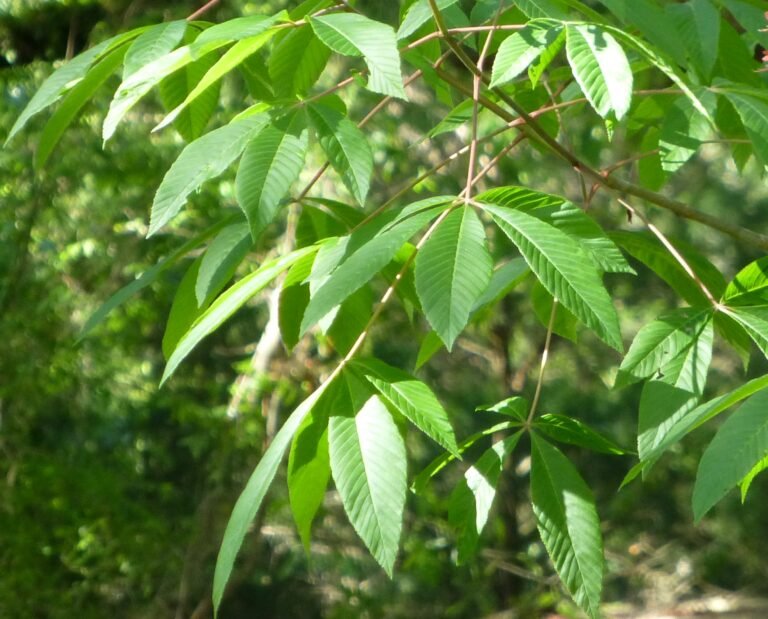
Flowers
The flowers appear in the spring, mid-March and April in central Florida, in clusters of red tubular blooms.
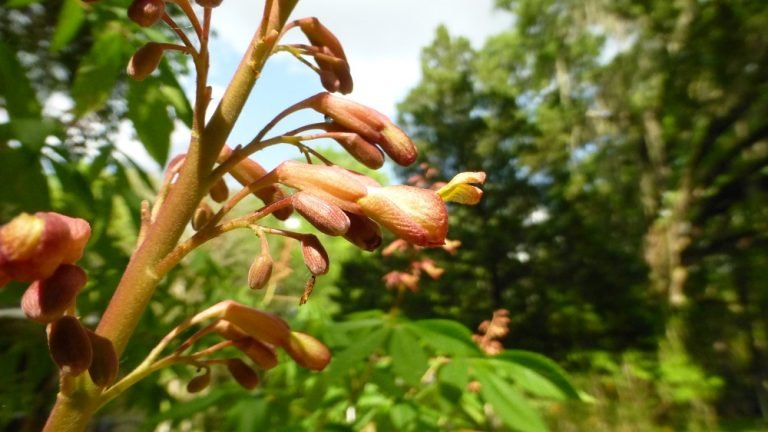
Fruit
The fruit is a large, 3 – 6 cm, brown, dehiscent, capsule. Inside the fruit are one to two large seeds that are shiny, reddish, brown.
The seeds are poisonous.
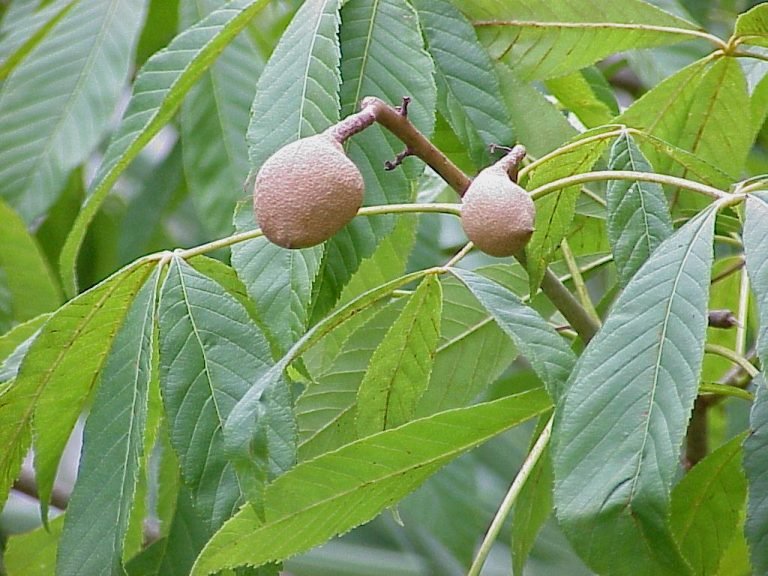
Habitat
It occurs naturally in woodland hammocks, sandhills, and limestone rich woods and forests.
It can be found along the eastern coast of the United States and is salt tolerant.
Native Range
In Florida it occurs naturally from the panhandle south to Orange County.
It is native to: AL, AR, FL, GA, IL, KY, LA, MO, MS, NC, OK, SC, TN, TX, VA, and WV.
Red buckeye grows in zones 4a to 9b.
Landscape Use
In the home landscape red buckeye does best planted as an understory tree.
It grows in part shade with average to moist soils.
Once established it will survive on natural rainfall.
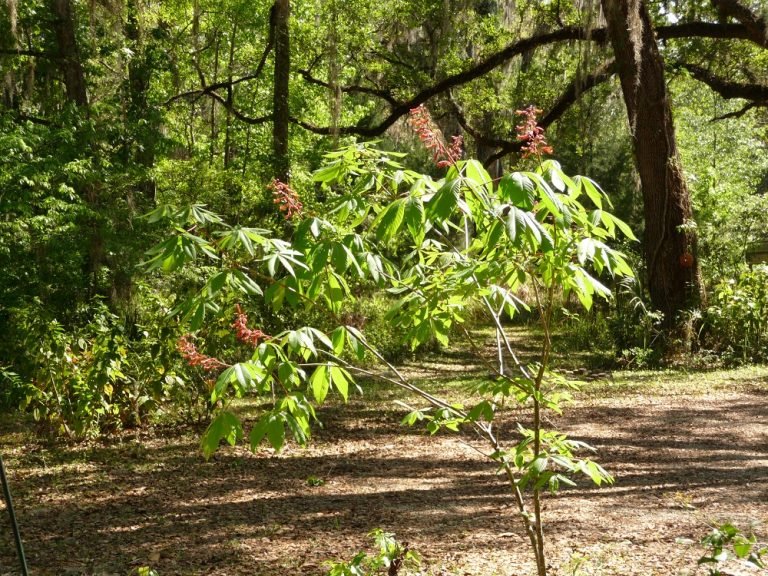
Wildlife Use
Hummingbirds find the flowers irresistible.
Red buckeye blooms are a reliable source of nectar in the spring for a hummingbird garden.
As previously mentioned the main use by wildlife is a nectar source for hummingbirds in the spring. The flowers are also visited by large butterflies such as cloudless sulphurs for their nectar.
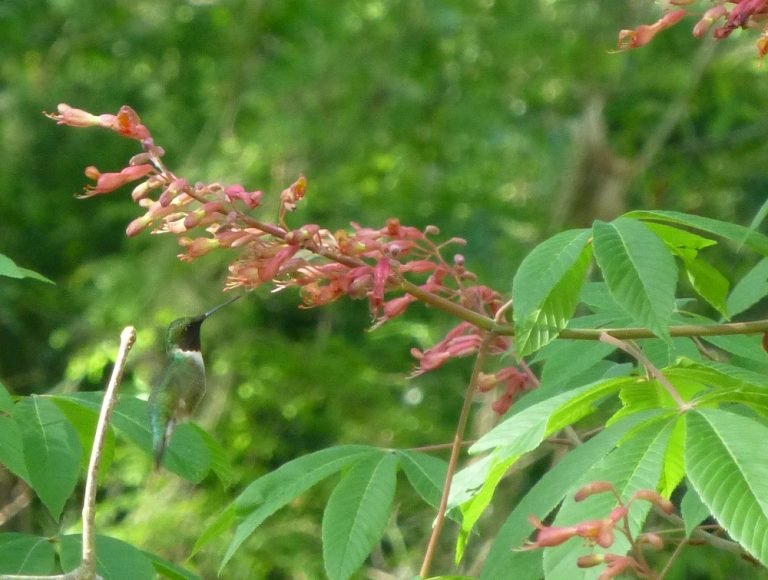
Human Use
The crushed seeds have been used to stun fish for easy capture, a decoction of the bark has been used for ulcers and toothaches, and the roots are said to make a very acceptable soap alternative. [1]
The seeds are poisonous so it is best to plant it in a natural area where children, livestock and pets cannot access the tree or pick up dropped fruit.
Propagation
Propagation is most easily achieved with fresh seeds. Only fresh seeds will germinate so once the fruit starts to split open, along the adhesions, the seeds should be collected and placed in soil to germinate. Germination rate with fresh seeds is generally as high as one hundred percent.
Transplanting seedlings or saplings is another alternative to get buckeye trees. When transplanting remember to remove flowers and fruit so the tree can put its energy into recovering from being moved.
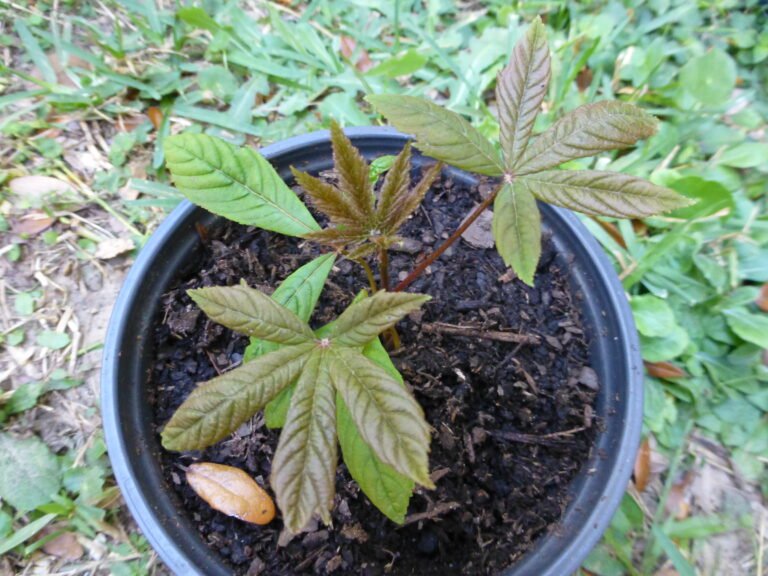
Footnote
[1] Coker, William Chambers, and H. R. Totten. Trees of Southeastern States, Including Virginia, North Carolina, South Carolina, Tennessee, Georgia, and Northern Florida. The University of North Carolina Press, 1945.
Next article: Red Mulberry
